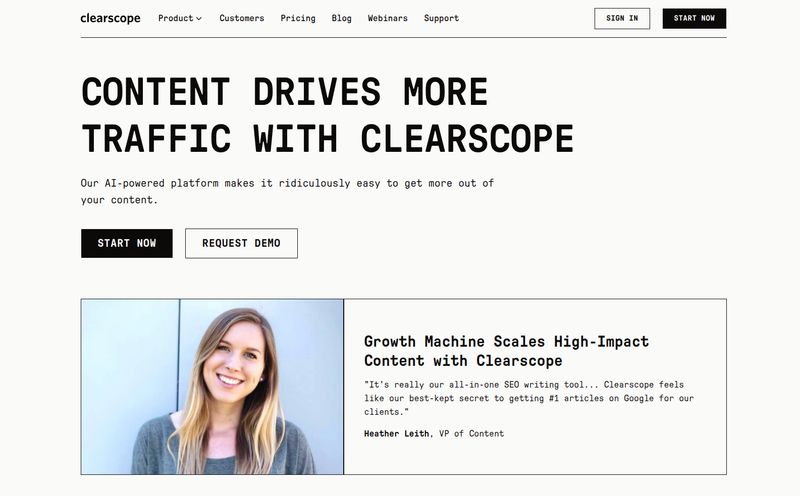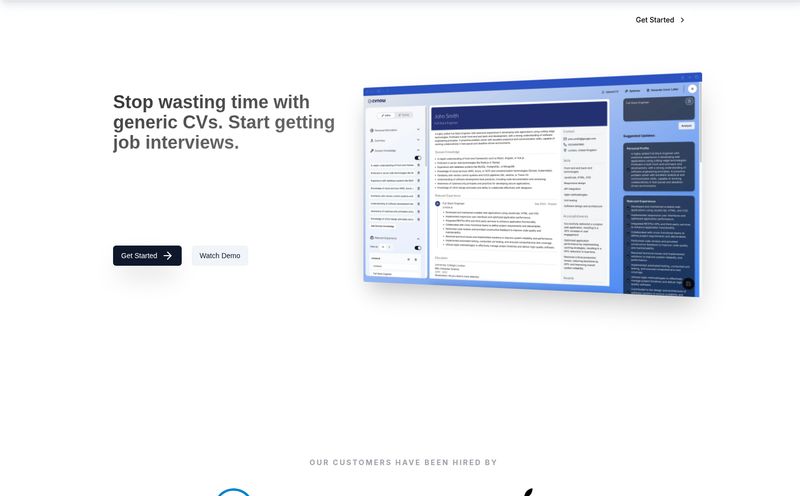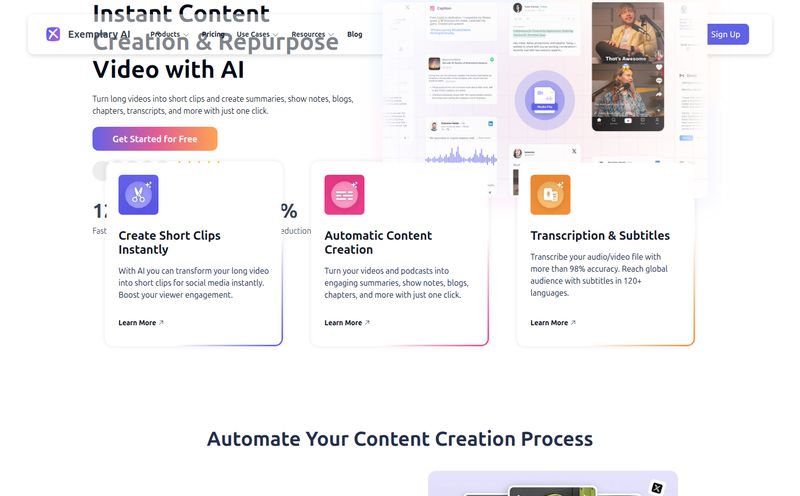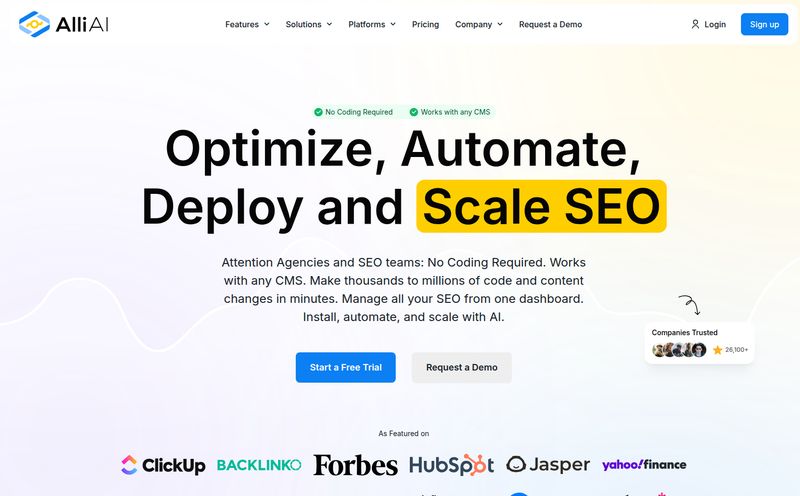You and me, fellow SEO pros and content creators. We're all on the same hamster wheel, aren't we? Churning out content, hunting for keywords, and then spending what feels like an eternity weaving a web of internal links, hoping Google’s spiders are in a good mood. It’s a grind. And honestly, some days it feels like we’re just throwing spaghetti at the wall to see what sticks.
For years, I’ve been juggling a half-dozen tools to manage this chaos. One for keyword research, another for on-page audits, a third for social scheduling… you know the drill. It’s expensive and, frankly, exhausting. So when I kept hearing whispers in the SEO community about a tool called InLinks, a platform claiming to simplify everything with an 'entity-based' approach, my curiosity was piqued. Could one tool really tackle content strategy, internal linking, and social media without being a master of none? I had to find out.
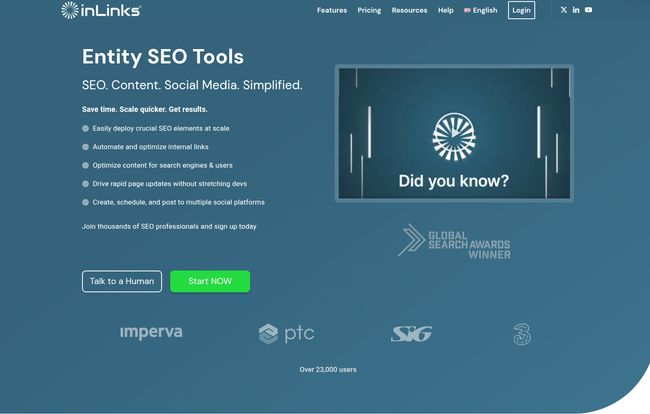
Visit Inlinks® Entity SEO Tool
First Off, What on Earth is 'Entity SEO'?
Before we get into the nuts and bolts of the tool, we need to talk about this term: Entity SEO. It sounds a bit like something out of a sci-fi movie, but it’s actually the direction SEO has been heading for years. Remember the good ol' days of just stuffing a target keyword into a page 15 times? Yeah, that’s long gone.
Google is smarter now. It doesn't just see strings of letters (keywords); it understands concepts, or “entities.” An entity is a person, place, thing, or idea. Think 'Elon Musk', 'Tesla, Inc.', or 'electric vehicles'. Google understands the relationship between these things. Entity SEO is the practice of optimizing your content around these concepts and their relationships, not just isolated keywords. It’s about building topical authority and showing Google that you’re an expert on a whole subject, not just a single search term. It’s about context. And it’s why some sites with fewer backlinks can outrank behemoths—they just make more sense to the algorithm.
A Look Under the Hood at InLinks' Key Features
Okay, with that bit of theory out of the way, let's see how InLinks actually puts it into practice. This isn't just another keyword tool; it’s a whole different way of thinking about your site's architecture.
The Topic Planner: Your Content Strategy GPS
I’ve used a lot of topic research tools, and most of them just spit out a long list of long-tail keywords. Helpful, but it still leaves you to connect the dots. The InLinks Topic Planner is different. It analyzes your entire website to understand what you already rank for and, more importantly, where the gaps are. It then suggests topic clusters—groups of related content—that you should build out. It's like having a GPS for your content strategy. It doesn’t just give you a destination; it maps out the entire route, telling you when to create a new pillar page or a supporting blog post. For me, this was the first 'aha!' moment. It’s strategic, not just tactical.
Automated Internal Linking: The Real Game-Changer
If you've ever manually built internal links for a 500-page website, you know the soul-crushing boredom it involves. This, right here, is where InLinks earns its keep. Once you set it up (which does involve adding a snippet of JavaScript to your site), it gets to work. It reads your content, understands the entities on each page, and automatically creates relevant internal links between them. All with appropriate anchor text. It's like having a junior SEO working 24/7 for you, but without the need for coffee breaks. The site shows case studies of sites jumping from page 5 to page 1, and I believe it. A well-structured internal link profile is one of the most underrated SEO superpowers, and this automates the whole process. It’s frankly, magical.
Content Optimization and AI Assistance
Once you’ve planned a piece of content, InLinks has a content editor that helps you write it with entities in mind. It gives you a score and a list of related topics to include, ensuring your new article fits perfectly into your site's topical map. It also has an AI writing assistant. Now, I’m always a bit skeptical of AI writers, but this one is designed to work within the InLinks ecosystem. It’s pretty handy for generating outlines or overcoming writer's block, but I'd still advice using it as a co-pilot rather than the pilot itself. It helps you write better, faster, and more contextually relevant content for search engines and humans.
So, What's the Investment? A Breakdown of InLinks Pricing
Alright, let's talk turkey. A tool this powerful can't be free, right? Well, yes and no. They do have a free plan, which is pretty generous and a great way to dip your toes in the water.
Here’s a quick look at their pricing tiers, so you can see where you might fit in.
| Plan | Price | Best For | Key Features |
|---|---|---|---|
| Free | Free | Beginners & Small Sites | 2 content optimizations/month, 25 pages for internal linking, keyword research, social automation. |
| Freelancer | $49/month | Solo SEOs & Small Businesses | 100 pages, full Content Planner, full AI content, improved audits. |
| Agency | From $196/month | Marketing Agencies & Teams | Starts at 430 pages, API access, unlimited topic data, unlimited projects/users. |
| Enterprise | Custom | Large-scale Websites | 100,000+ URLs, dedicated infrastructure & account manager, tailored contracts. |
Prices are based on information available at the time of writing. For the most current details, check out the InLinks pricing page.
My Honest Take: The Good, The Bad, and The Bottom Line
No tool is perfect. After spending some quality time with InLinks, here’s my no-fluff opinion.
The good stuff is really good. The time saved on internal linking alone is almost worth the price of admission for the paid plans. It’s not just a time-saver; its a strategic advantage that builds a resilient, contextually rich site structure that Google loves. The topic planner shifts your mindset from chasing keywords to building genuine authority. It’s a tool built by real SEOs who get it—I believe the CEO is Dixon Jones, a name many of you will recognize from the industry—and it shows.
Now, for the reality check. The higher-tier plans are an investment. An agency spending a couple hundred bucks a month needs to see a clear ROI. And while the tool is powerful, there is a bit of a learning curve. You have to un-learn some old habits and embrace the entity-based approach. Also, its reliance on a JavaScript integration for full automation might make some old-school tech SEOs a little hesitant, though in my experience, it's been lightweight and hasn't caused any performance issues.
Is InLinks Worth It for You?
So, the final question. Should you sign up? Well, it depends on who you are.
- If you’re a freelancer or a small business managing one or two sites, the Freelancer plan is a fantastic value proposition. It automates some of the most tedious parts of SEO.
- If you run an agency, the ability to manage multiple projects, build out content strategies, and automate linking at scale could be a massive efficiency booster. Calculate the billable hours you'd save—it might pay for itself very quickly.
- If you’re a blogger with a single small site, I’d say start with the free plan. Get a feel for it. The content optimization tips alone will be a big help.
It’s not a magic button that guarantees #1 rankings. Nothing is. But it is a powerful ally that helps you work smarter, not harder, by aligning your efforts with where search is headed.
Frequently Asked Questions about InLinks
I've gotten a few questions about this, so here are some quick answers.
1. What exactly does InLinks do?
In a nutshell, it's an all-in-one SEO platform focused on entity-based optimization. It helps you plan content clusters, automates your internal linking, helps you optimize content with entities in mind, and even manages social media posting.
2. Does InLinks replace tools like Ahrefs or Semrush?
Not entirely. While there's some overlap, I see InLinks as a specialist in content strategy and on-page/technical automation. You might still want a tool like Ahrefs for deep backlink analysis or competitor research. They complement each other well.
3. How does the automatic internal linking work?
You add a piece of JavaScript code to your website's header. InLinks then analyzes the content on your pages to understand the main topics (entities). It then automatically inserts links between pages that discuss related topics, using relevant anchor text. You have control over this process, of course.
4. Is it difficult to set up?
Not really. If you can add a Google Analytics tracking code to your site, you can set up InLinks. The main step is adding the JavaScript snippet. After that, the system does most of the heavy lifting, though you'll want to spend time in the dashboard to guide the strategy.
5. Is there a free trial?
They go one better—they have a permanent Free plan. It has limitations, but it’s more than enough to get a solid feel for the platform’s core capabilities before you decide to upgrade.
My Final Thoughts
In an industry that’s constantly changing, the tools that last are the ones that don't just follow trends—they anticipate them. InLinks feels like one of those tools. It’s built for the future of search, a future that’s less about gaming the system and more about building genuine, interconnected authority. It takes some of the most tedious, time-consuming parts of our jobs and puts them on autopilot, freeing us up to focus on what really matters: creating great stuff.
It won't be for everyone, and that's okay. But if you're tired of the grind and ready to start building a smarter, more resilient website, I'd say it's absolutely worth a look.
